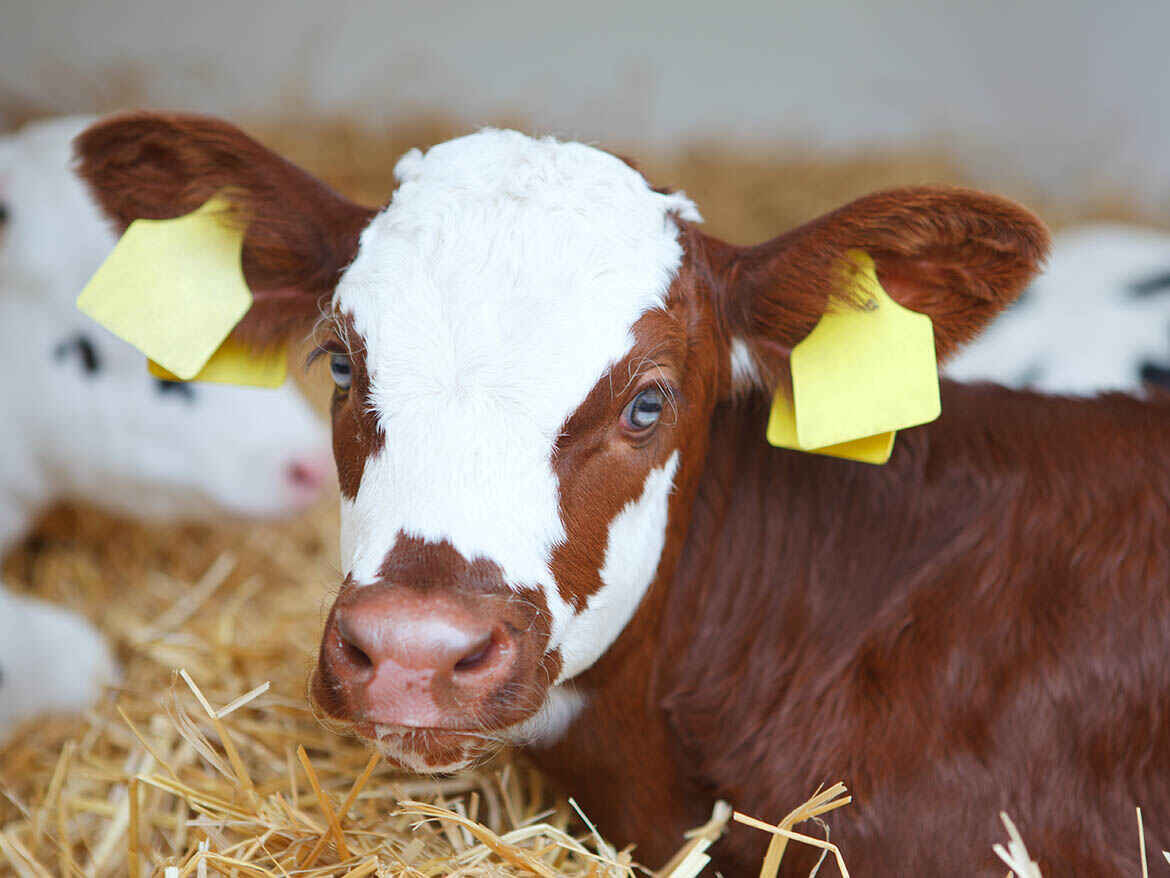
Managing diarrhoea in calves

Diarrhoea in calves is widespread and has a decisive influence on economic rearing. The underlying causes can be different. It is important to take the right measures in advance and to react quickly when the first signs appear.
Three-quarters of calf-rearing losses are caused by diarrhoea. Sick calves suffer from an excessive loss of fluid (from 10%, approx. one litre, there is a threat to life), hyperacidity of the blood, lack of energy and exhaustion. As a consequence, the calves may suffer from circulatory collapse or even cardiac arrest.
How can environmentally induced diarrhoea in calves be prevented?
A common cause of diarrhoea is stress, which can be avoided through good management:
- Avoid stress when changing groups
- In case of unavoidable stress, strengthen the intestinal flora with KALBI PRO TAB
- Avoid errors in feeder management - pay attention to feeder concentration and temperature
- Protect newborn calves from hypothermia
- Ensure a good stable climate
- Avoid overcrowding
How can pathogen-induced diarrhoea in calves be prevented?
Numerous pathogens, such as Rota or Corona viruses, E. coli bacteria as well as cryptosporidia threaten the health of calves and especially the intestines as early as in the first weeks. Preventive measures can be of great help here:
- Sufficient and early colostrum administration
- Optimised stable hygiene
- Feeding that meets the needs of the calves and promotes their development
- Strengthening the immune system to prepare the calves for the farm-specific germ pressure
- Ensure hygiene of calving and calf pens
- Promoting intestinal integrity and resistance with KALBI SAN LIQUID
What immediate measures are important in case of calf diarrhoea?
Important measures to prevent a severe illness with subsequent loss of performance are:
- Ensure a constant supply of fluids
- Compensate for losses with additional milk meals and electrolytes, for example with SCHAUMANN ISOLYT or KALBI-LYT.
- Do not discontinue milk feeds under any circumstances
- Support the intestinal mucosa and fight pathogens with KALBI SAN LIQUID
- Increase stall hygiene and litter more frequently
- Prevent hypothermia
What are the early signs of calf diarrhoea?
The earlier the diarrhoea is detected and the calves are treated, the greater the likelihood of a quick recovery without subsequent consequences. The following signals must never be ignored:
- Lack of suckling
- Wet and dirty flanks and tail
- Dull appearance and shaggy coat
- Changed faeces pattern
- Sunken eyes as an important sign of fluid loss
- Lack of ear play
- Tightened abdominal wall